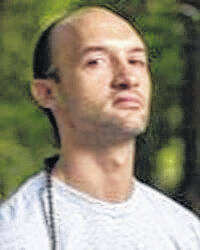OPINION SHAPER
The earliest censuses taken by the fledgling American government dictates that tribal nations were once very large and over the centuries were decimated by colonial diseases, warfare and assimilation.
John Lawson, Surveyor General of the Carolinas, estimated that the Tuscarora Nation, the largest nation in the Carolina interior, consisted of roughly 15 towns and 4800 persons.
Most historians point to Lawson as the earliest colonist to visit the area along the Neuse River that would later become Raleigh, documenting Indigenous nations, their customs, languages and population sizes. Some experts have pointed out that Lawson and other colonists disregarded the Tuscarora communities that were mostly neutral during that time.
They also revealed that Lawson’s estimates underestimated the actual size of the Tuscarora population by almost half, as he did not consider the vast territory of the Tuscarora Nation.
Estimates of the Tuscarora population that remained on the Indian Woods reservation following the Tuscarora Wars were biased toward eliminating Tuscarora claims to land and resources and had flawed population numbers.
This is because not all Tuscaroras resided on the reservation; some remained in the Tuscarora strongholds of Bertie and Edgecombe counties. Treaties concluded between Tuscarora Chief Tom Blount and the northern Tuscarora villages aided in establishing the Indian Woods reservation in Bertie County.
Following the defeat of several forts in 1712 built by Chief Hancock’s southern Tuscarora alliance, some Tuscarora villages started migrating and joining the Haudenosaunee Confederacy in the northeast.
Tired of encroaching settlers, hundreds of Tuscarora migrated to the backcountry of North Carolina in counties such as Bladen, Cumberland and Robeson to avoid further conflict. However, the NC General Assembly passed laws beginning in 1766 to disenfranchise the Tuscarora that remained in the state of their claims and interests to the lands and resources of the reservation.
These unjust laws included land leases that stated when the Tuscarora either went extinct or moved off the land entirely, that the reservation lands would revert to the ownership of the state.
The Tuscarora that settled in Robeson County were part of Tuscarora families from the northern villages that were protected via treaty under state law with Chief Tom Blount.
The first US Census completed in 1790 revealed that the ancestors of the Tuscarora Nation living in Robeson County were well established in the region. When bridging together historical periodicals, official state and federal records, and the oral tradition of the Tuscarora Nation of North Carolina, it is fair to say that at least 100 families of Tuscarora resided in the vicinity of Scuffletown in the mid to late 19th century.
The murders of Allen and William Lowry, two prominent Tuscarora tribal citizens, were investigated by state and federal authorities and were found to be the root cause of the Lowry War in Robeson County between 1865-72.
Ancestors of the Tuscarora Nation of North Carolina are documented as Indian on the Indian and Special Indian Censuses conducted as part of the US Census in 1900 and 1910.
These same Tuscarora families continued to be enumerated as Indian on the 1920, 1930 and 1940 US Censuses. Because of Federal Indian Termination-Era Policies, the US Censuses of 1950 and 1960 enumerated most Natives as non-whites.
The 1970 US Census shows a general reversal in the previous trend and once again enumerates Indigenous citizens as Indians but with no tribal designation. The 1980 US Census clearly delineated between Indigenous nations by origin, region and language.
On this census, the Tuscarora Nation tribal numbers of North Carolina appear to be comparable to that of the Tuscarora Nation tribal numbers of New York. Both the Tuscarora listed in NY and NC are designated as part of the Iroquois cultural group and linguistic stock, better known as the Haudenosaunee or People of the Longhouse.
North Carolina Tuscarora appear on the 1990 US Census in a similar fashion and are shown on the 2000-2020 U.S. Censuses as Indians as well. Why is this so important? This is essential for any tribal nation that resides in the United States when it comes to visibility and representation in political and cultural arenas. Indigenous sovereignty includes the right to self-determination and equitable political representation.
As recently as 2019, the North Carolina Commission of Indian Affairs denied the Tuscarora Nation’s petition for tribal reaffirmation due to opposition from the Lumbee Tribe.
Despite US Census records and other data clarifying that the Tuscarora Nation communities are extended relatives of the Haudenosaunee and are separate from the Lumbee, the NC Indian Commission continues to deny the authentic claims of the Tuscarora Nation.
The Tuscarora Nation of North Carolina has been represented on US censuses before and after the passage of the Lumbee Act. The Tuscarora Treaties of the early 18th century demand that the Tuscarora Nation of NC receive proper representation and equitable resources.
Rahnàwakęw Donnie McDowell is a member of Beaver Clan at Maxton Longhouse and is the Public Relations Officer of the Tuscarora Nation of North Carolina. Reach him by enmail at [email protected].








